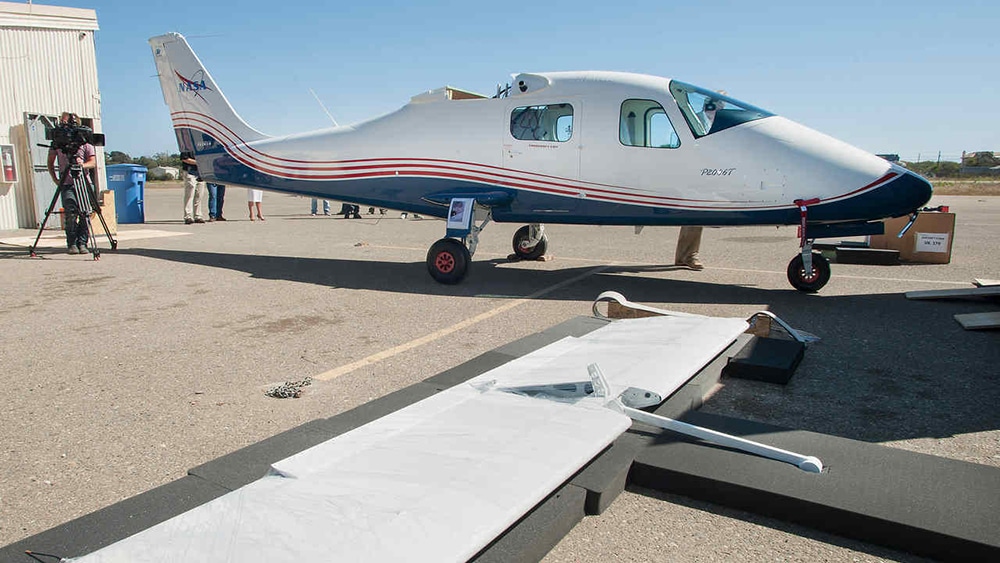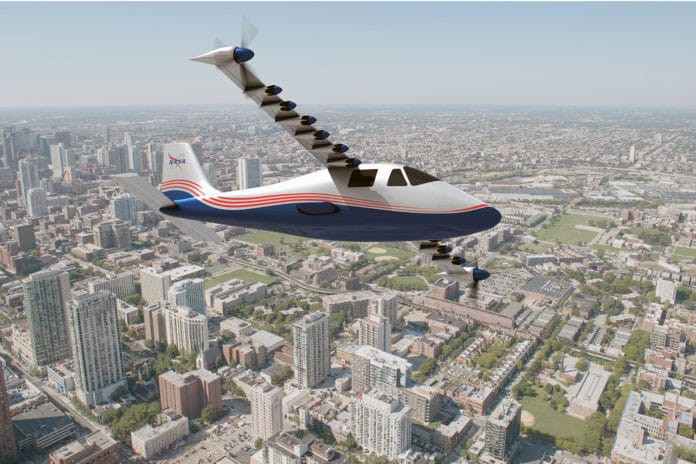Flying without polluting without making noise! NASA has unveiled Maxwell X-57, an experimental 100% electric airplane that aims to revolutionize the industry. At the moment, the aircraft is at the Armstrong Flight Research Center in Edwards, California.
Known as Modification II or Mod II, it is the first of three planned modifications. This version replaces the traditional internal combustion engine with an electric engine that promises, on paper, greater efficiency, much less noise and exhaust emissions close to zero.
The experimental airplane
In the future, iterations are planned to be labeled Mod III and Mod IV. At present, the machine is mainly used for component testing. The wings are, for instance, undergoing stress laboratory tests that are given a very unusual shape.
The X-57 aircraft uses 14 electric motors with propellers mounted on the leading edges of the wing to increase airflow. The motors are powered by specially designed lithium-ion batteries.

NASA’s goal is to create technology that commercial manufacturers can use to make the entire aviation industry more environmentally friendly. Currently, the biggest limitation is battery capacity, which means that the aircraft can only be used for short-haul flights.
“We’re focusing on things that can help the whole industry, not just one company,” Brent Cobleigh, project manager, told Reuters in an interview at the research center.
Advantages of Maxwell X-57
The electric drive system is more compact, lighter, and easier to maintain than conventional solutions. In addition, it excels in lesser generated noise and lower emissions. All electric motors are used only during take-off and landing, during flight only two outer engines are sufficient to move the plane.
In the current configuration, the aircraft offers the theoretical range of up to 160 kilometers and a maximum speed of 282 km/h. It needs only a third of its energy for its flight compared to internal combustion engines.
NASA intends to launch the first Maxwell X-57 flight by the end of 2020.
